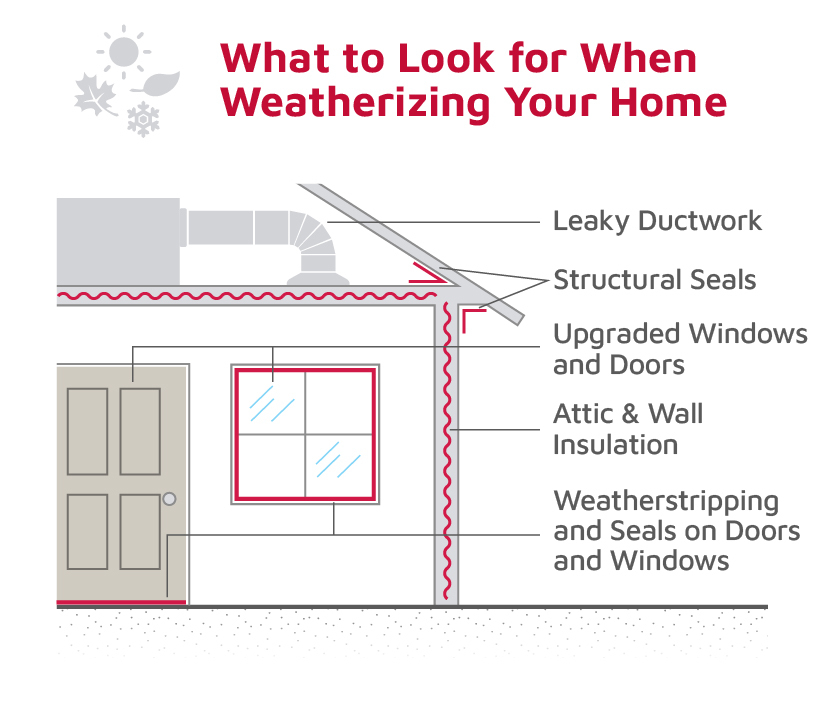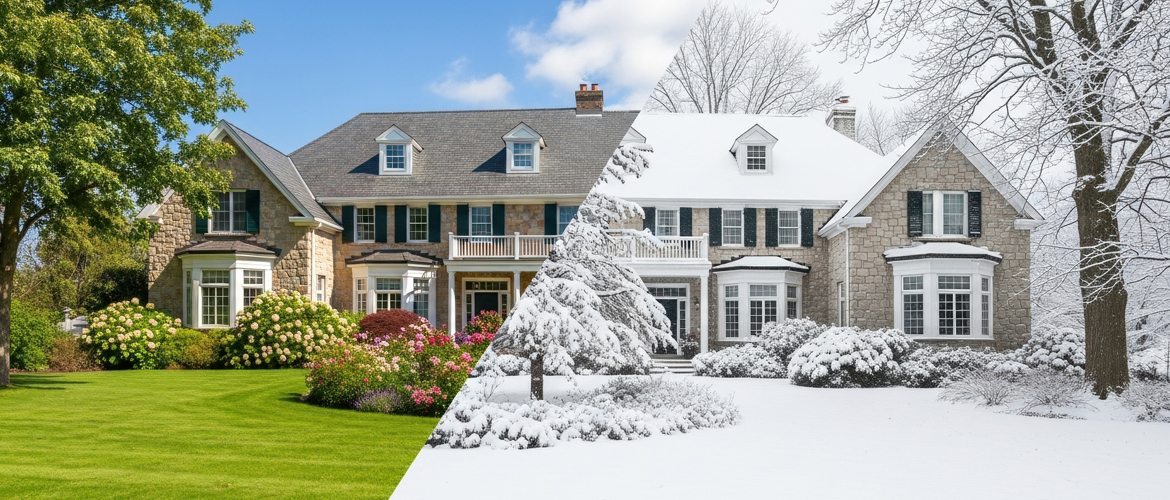Boosting Comfort, Savings, and Efficiency
As seasons shift, many homeowners notice their energy bills climbing or find their systems struggling, leaving indoor spaces that never quite feel comfortable. Proper weatherization, the preparation of your home to help maximize the efficiency of your HVAC system, offers a solution.
By making your home more resistant to outside conditions, weatherization reduces wasted energy, improves comfort, and helps lower costs. It is a practical investment that not only saves money but also supports a healthier and more sustainable living environment.
Why Weatherization Matters
Weatherization is the process of improving a home’s “envelope.” The walls, windows, doors, floors, and roof that separate inside from outside create that envelope. A proper interior envelope minimizes air leaks and heat transfer so your heating and cooling systems don’t have to work as hard.
The impact on energy costs can be substantial. According to the U.S. Department of Energy, effective weatherization can cut heating and cooling expenses by as much as 30%. That means less strain on your budget and less demand on your HVAC equipment. Just as important, weatherization creates a more comfortable living space by reducing drafts, stabilizing indoor temperatures, and even limiting outdoor noise from entering your home.
Starting with a Home Energy Audit
Before making any upgrades, it helps to know exactly where your home is losing energy. A home energy audit is the first step toward effective weatherization.
What to expect during an audit
- A certified auditor inspects your home for air leaks, insulation levels, and HVAC efficiency.
- Tools such as blower doors and infrared cameras are often used to identify hidden drafts or heat loss behind walls and ceilings.
- At the end, you receive a detailed report highlighting problem areas and recommended improvements, along with projected energy savings.
The most common recommendations after an audit include sealing gaps around windows and doors, adding insulation to attics, basements, and walls, and, in many cases, upgrading HVAC equipment to more efficient models. Even smaller adjustments, like sealing ductwork or improving ventilation, can make a noticeable difference in comfort and efficiency.

Common Weatherization Solutions
Weatherization is not one single fix, but rather a collection of strategies that work together to protect your home from energy loss.
- Air Sealing: Small cracks and gaps may not seem like much, but collectively they can add up to the size of an open window. Caulking around windows, weatherstripping doors, and sealing gaps with spray foam can dramatically cut down on unwanted drafts.
- Insulation: Adding insulation to attics, walls, and floors helps regulate indoor temperature year-round. Fiberglass, cellulose, and spray foam are the most common types, each offering unique benefits like moisture control or sound reduction.
- Upgrading Windows and Doors: Old single-pane windows and aging doors are major culprits of heat loss. Energy-efficient models with double or triple glazing help lock in comfort and reduce strain on your HVAC system.
- Duct Sealing: In homes with forced-air heating or cooling, leaky ducts can waste a significant amount of energy. Sealing and insulating ductwork keeps conditioned air where it belongs.
Together these improvements can work to substantially reduce energy waste, improving temperature consistency and comfort throughout your home.
Choosing a Certified Energy Auditor
- Look for professionals certified by the Building Performance Institute (BPI) or the Residential Energy Services Network (RESNET).
- These credentials indicate thorough training and reliable recommendations.
- Some utility companies even offer free or discounted audits, making it easier to take this first step.
Your local professional HVAC service provider can help you locate and schedule a proper energy audit.
Benefits That Go Beyond Savings
While lowering utility bills is one of the biggest advantages, weatherization also provides other lasting benefits:
- Consistent indoor comfort: Proper insulation and sealing reduce hot and cold spots, helping rooms maintain stable temperatures year-round.
- Healthier air quality: By keeping moisture, mold, and allergens at bay, weatherization supports a cleaner, healthier indoor environment.
- Extended HVAC lifespan: Less strain on your furnace or air conditioner means fewer repairs and a longer operating life.
- Noise reduction: Adding insulation and sealed gaps helps keep outside noise from disrupting your home.
- Increased home value: Buyers often see energy-efficient homes as more attractive, giving your property an edge in the housing market.
Pairing Weatherization with Energy-Efficient Upgrades
Weatherization creates the groundwork for energy savings, but the real impact comes when it is combined with energy-efficient HVAC systems. A well-sealed and insulated home allows modern heating and cooling equipment to perform at its best. High-efficiency furnaces, heat pumps, and air conditioners use advanced technology to provide reliable comfort while consuming less energy, which reduces monthly utility costs and environmental impact.
Homeowners looking to upgrade can explore a variety of HVAC solutions, from smart thermostats that fine-tune indoor comfort to variable-speed systems that adapt to changing conditions. Weatherization improvements not only increase efficiency but also help extend the lifespan of your system by reducing unnecessary strain.
The financial side of upgrading is often easier than expected. Many local and federal programs offer rebates and tax incentives for energy-efficient improvements, helping offset upfront costs. When selecting an HVAC system, consult with professionals to ensure you choose the right model for your home's needs. They can provide expert advice on energy-efficient options and installation.
Together, weatherization and the right HVAC upgrades create a lasting combination of comfort, savings, and sustainability.
Support Through Weatherization Assistance Programs
Weatherization assistance programs offer financial aid to eligible homeowners for energy-efficient upgrades. Federal and state programs exist to help homeowners make energy-saving upgrades, often at little or no cost to those who qualify. These initiatives not only improve comfort but also reduce overall energy demand in communities, making them a valuable resource for families and the environment alike.
To apply for weatherization assistance, contact your local energy provider or HVAC professionals. They can provide information on eligibility requirements and application procedures.
A Smarter Home for Every Season
Weatherization is one of the most practical ways to improve your home’s efficiency, comfort, and long-term value. From sealing air leaks to upgrading insulation, even small steps can lead to noticeable savings on monthly bills. When combined with energy-efficient HVAC equipment, the benefits multiply lower costs, reduced environmental impact, and a home that feels consistently comfortable in every season.

